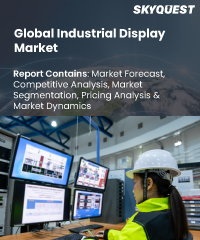
Report ID: SQMIG45J2160

Report ID:
SQMIG45J2160 |
Region:
Global |
Published Date: October, 2024
Pages:
270
|
Tables:
150 |
Figures:
78
Industrial Display Market Driver
Increasing Demand for HMI Solutions in Industrial Automation
Increasing Adoption of Advanced Display Technology
Industrial Display Market Restraints
Higher Cost Associated with New Display Technologies
Challenges in Compatibility and Integration
Our industry expert will work with you to provide you with customized data in a short amount of time.
REQUEST FREE CUSTOMIZATIONWant to customize this report? This report can be personalized according to your needs. Our analysts and industry experts will work directly with you to understand your requirements and provide you with customized data in a short amount of time. We offer $1000 worth of FREE customization at the time of purchase.

Report ID: SQMIG45J2160